
Here’s what you should expect to pay when renting an orbital, drum, vibrating, or edging floor sander—as well as where you can rent them and what else to know.
From cork to mahogany, you have lots of options


Hire a local wood floor installer to help you choose the right type of hardwood floor and ensure seamless installation.
Solid hardwood and tropical wood floors are the most expensive, while soft hardwoods and engineered wood are more affordable.
Softwoods and cork are prone to scratches, so they’re ideal in low-traffic spaces like home offices and bedrooms. High-traffic areas require strong hardwoods, engineered wood, or bamboo.
Since wood warps and rots when exposed to moisture, wet areas like the bathroom and kitchen would benefit from moisture-resistant floors like engineered wood or bamboo.
Hardwood floors are timeless, adding warmth, elegance, and value to any home. When it comes to choosing the right type of hardwood flooring, the options can seem overwhelming. From solid hardwood to cork and reclaimed wood, each material offers unique characteristics to suit different preferences and needs. Let’s explore the various types of hardwood floors, their benefits and drawbacks, and the best possible choice for your flooring project.


Hardwoods are a category of wood derived from deciduous trees. Characterized by their dense and durable nature, they’re ideal for applications like flooring where they’ll likely take a daily beating. Woods like oak, maple, walnut, and hickory are popular hardwood choices due to their natural beauty and strength. They’re a good choice for high-traffic areas like kitchens, hallways, and entryways, as well as households with pets that scratch against the flooring when they walk.
| Pros | Cons |
|---|---|
| Long-lasting | Prone to scratches |
| Increases home value | Moisture-sensitive |
| Natural beauty | High upfront cost |
Best for: High traffic areas like kitchens, hallways, and entryways, as well as households with pets.
Hardwood or other solid wood floors are not good candidates for wet areas of a home. Liquids can soak into natural wood floors and cause finishes to discolor or fail, particularly at the joints between the boards or near the ends of the boards next to the baseboards.
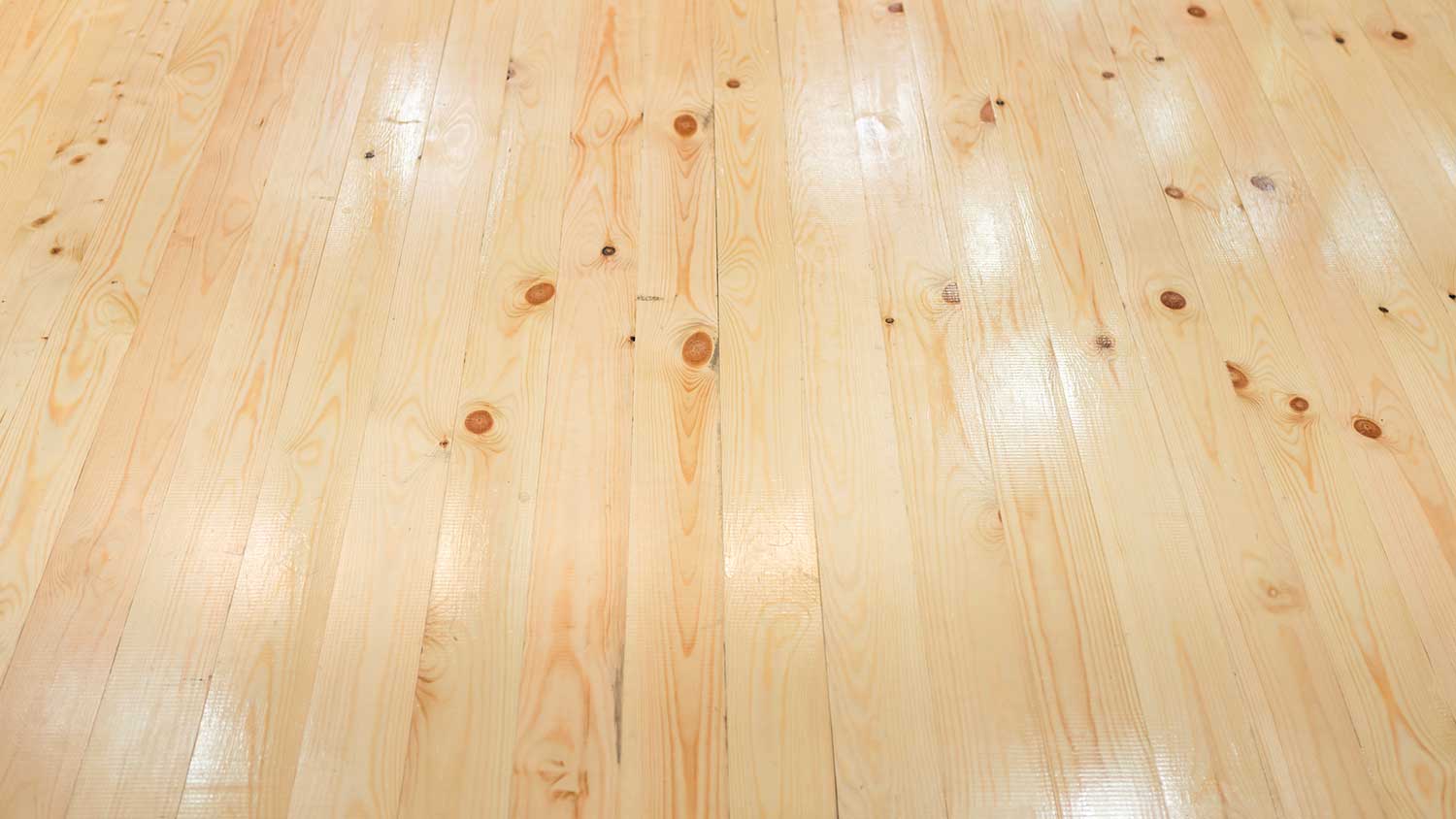
A type of wood primarily sourced from coniferous trees, softwoods are known for their relatively lighter weight and lower density compared to hardwoods. Softwood floors, made from trees like pine, cedar, and fir, offer a rustic aesthetic and, when it comes to wood floor grading, they tend to show their character marks beautifully.
Softwood floors are also affordable, and these woods grow faster, making them more renewable and eco-friendly than hardwoods. However, they shouldn’t be used in rooms that get a lot of traffic since they are less durable than hardwood floors. They are ideal for quieter areas like bedrooms and home offices.
| Pros | Cons |
|---|---|
| More affordable | Less durable |
| Easier installation | Prone to scratches |
| More eco-friendly |
Best for: Low traffic areas like bedrooms and home offices.
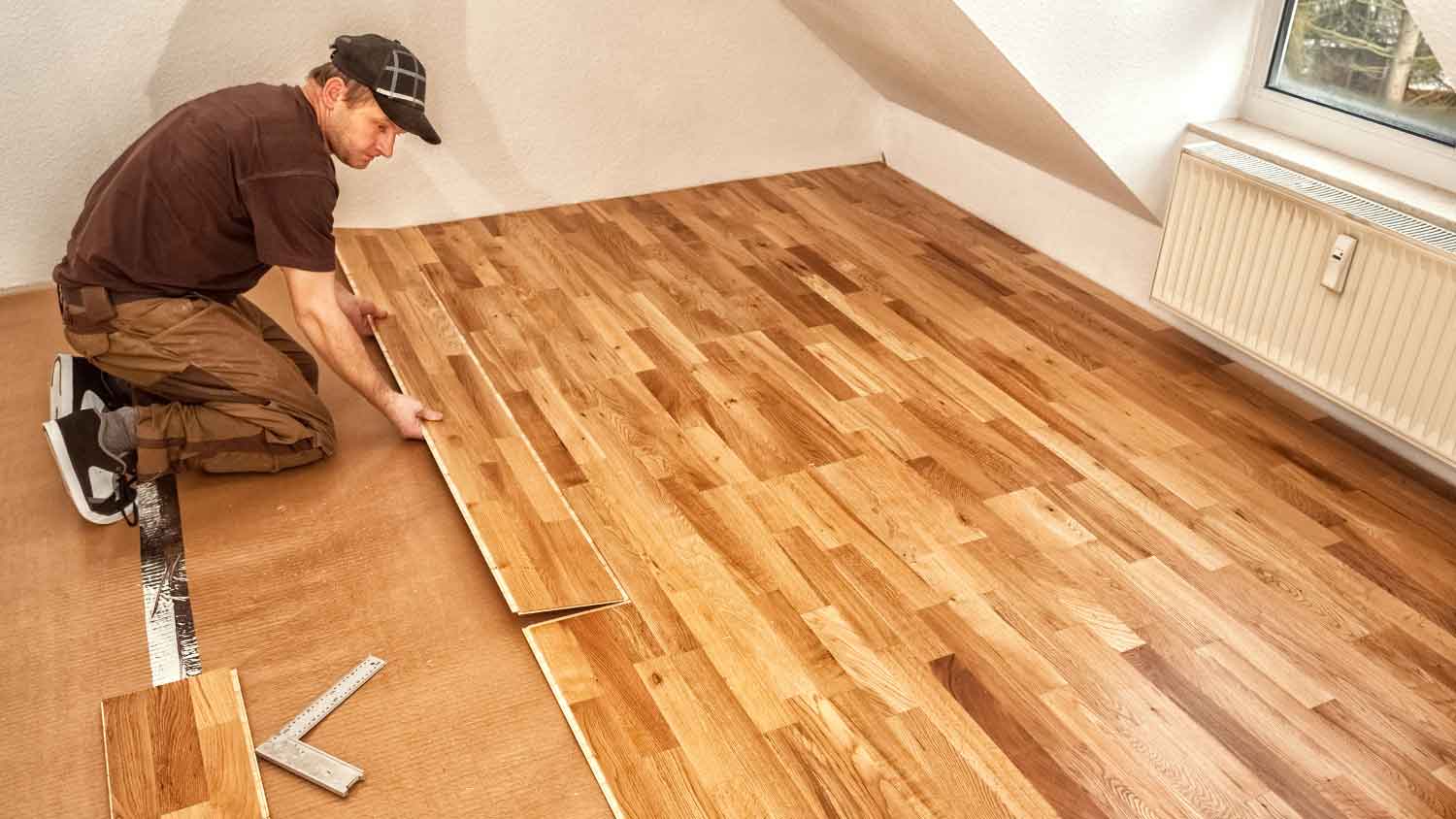
Engineered wood floors consist of layers of wood veneer bonded together, providing stability and resistance to moisture. They are favored for their easy installation and affordability, making them suitable for high-traffic areas around your home. They can even be installed over concrete basement floors since they withstand moisture and humidity changes better than other types of hardwood floors. However, engineered wood has a shorter lifespan than solid hardwood floors.
| Pros | Cons |
|---|---|
| Resists moisture | Limited refinishes |
| More affordable | Quality varies |
| Easy installation | Shorter lifespan |
Best for: Spaces with high moisture and humidity fluctuations, like entryways, basements, sunrooms, and kitchens
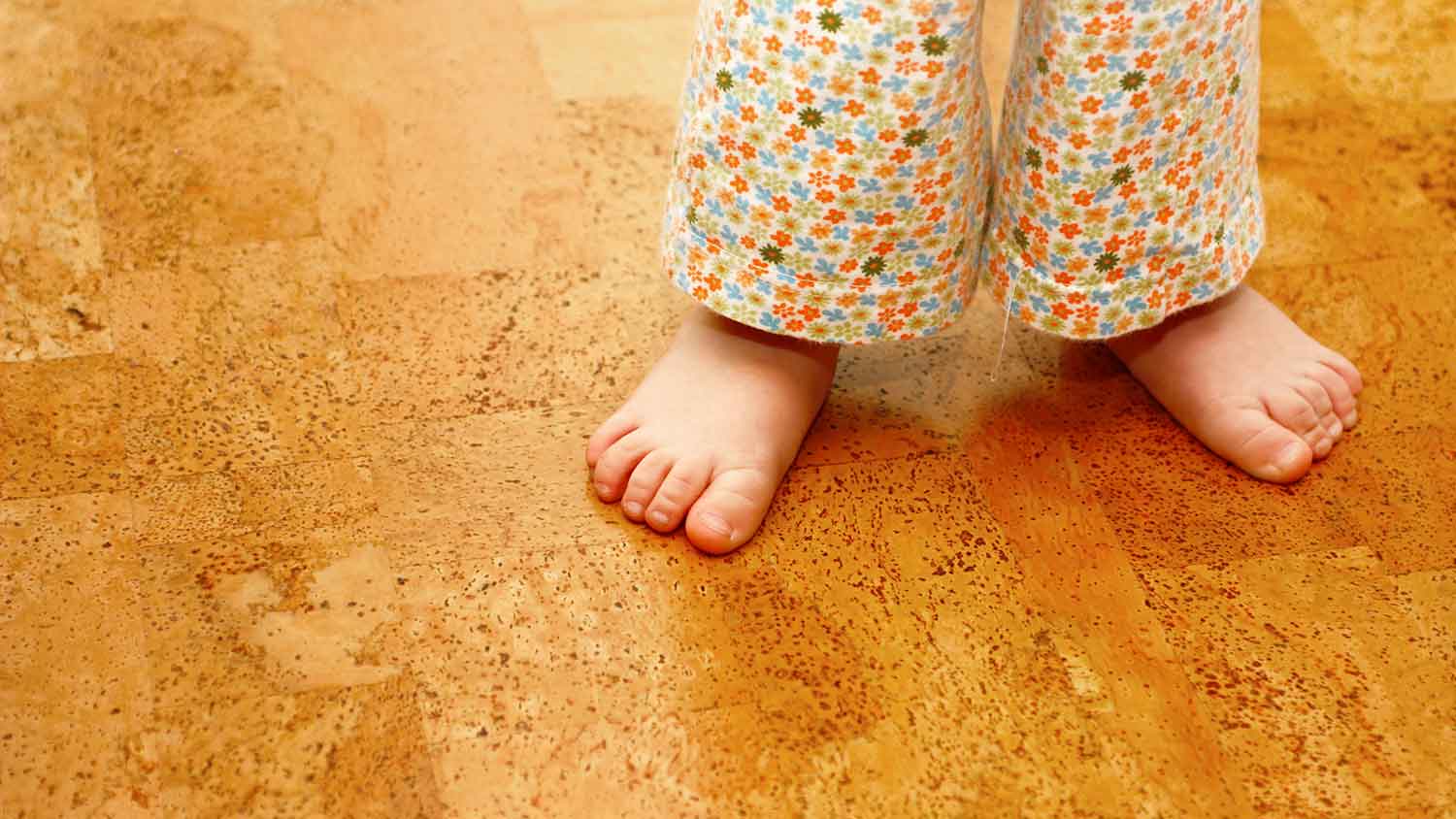
Known for its sustainability, comfort, and insulation properties, cork flooring is made from the bark of cork oak trees and is a sustainable flooring option. It’s much softer underfoot than most other flooring options and, since it has natural insulation, it remains a comfortable temperature as well. With cork’s soft construction, it absorbs sound for quieter use, but it also scratches easily. Cork’s benefits make it an excellent choice for hallways, bedrooms, and children's rooms.
| Pros | Cons |
|---|---|
| Eco-friendly | Scratches easily |
| Soft underfoot | Fades in sunlight |
| Thermal insulation |
Best for: Hallways, bedrooms and children's rooms.
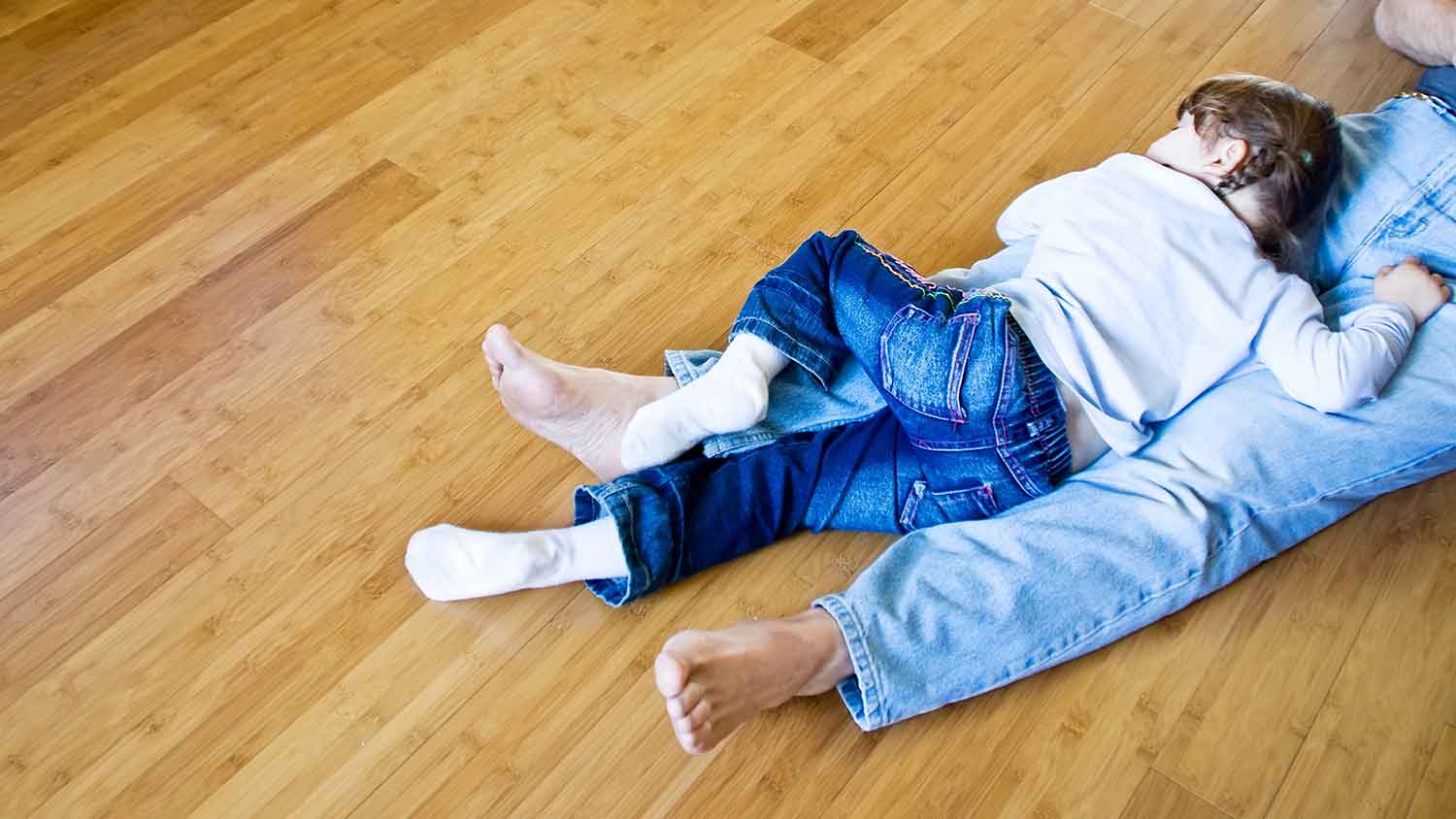
Derived from the fast-growing plant, bamboo flooring offers a contemporary look coupled with eco-friendly peace of mind. Along with its impressive sustainability, it's also easy to install, easy to maintain, and even resists pests. High-quality bamboo is incredibly durable and moisture-resistant, so it’s ideal in high-traffic rooms like the kitchen and bathrooms. However, if you use inexpensive bamboo for your floors, you’ll find that it’s prone to dings and scratches and it doesn’t do well in moisture-rich environments.
| Pros | Cons |
|---|---|
| Sustainable | Prone to scratches |
| Easy installation | Limited styles |
| Pest-resistant | Quality varies |
Best for: Bathrooms, kitchens, utility rooms, sunrooms, and other moisture-prone spaces if high-quality material is used.
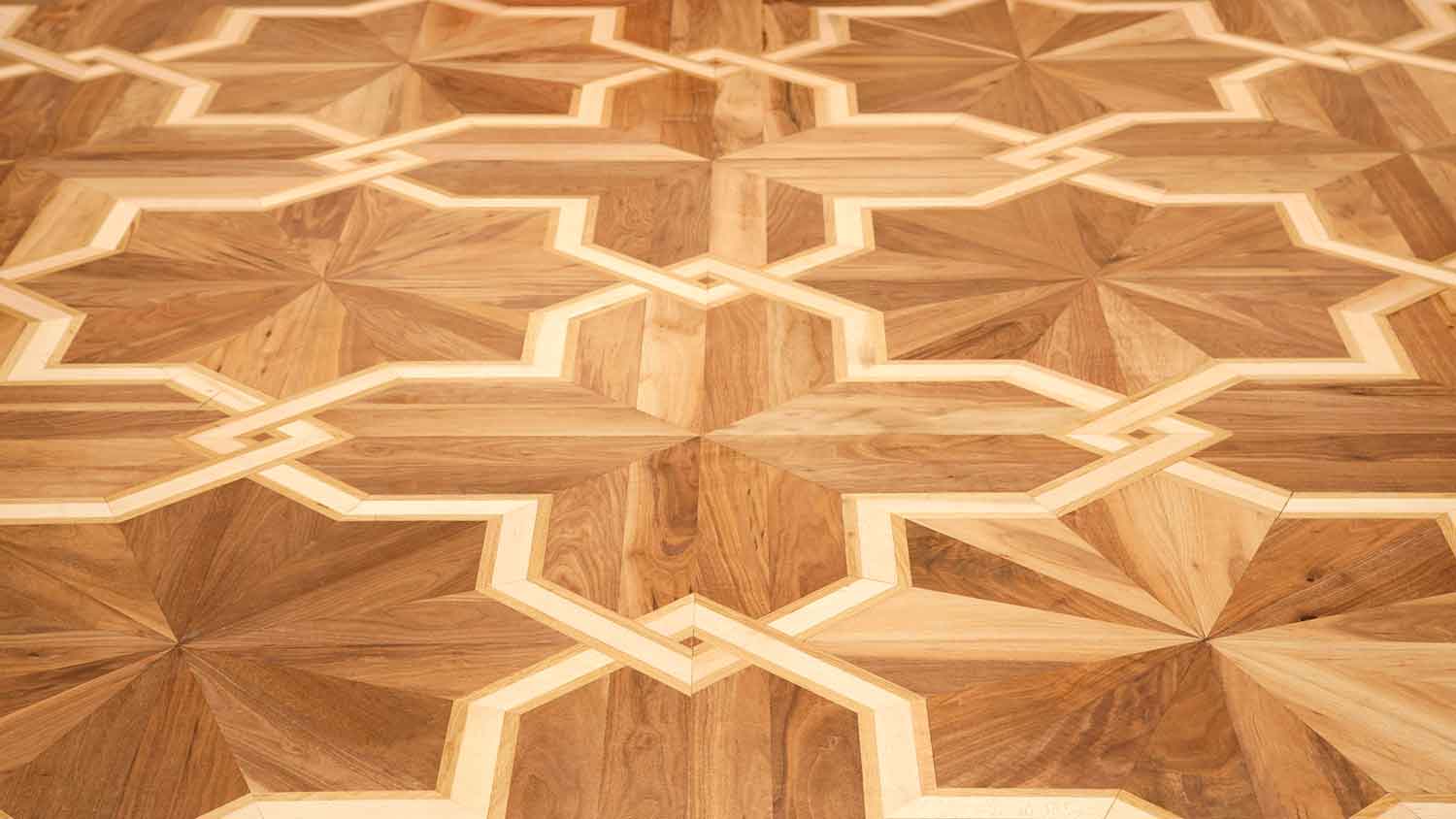
Featuring intricate patterns created from small wood pieces, parquet flooring offers a unique and elegant aesthetic. It's also exceptionally durable and adds value to your property, making it ideal for highly visible and high-traffic entertaining spaces like foyers, living rooms, and dining rooms. However, parquet flooring is prone to scratches, and once it’s damaged, it’s difficult to repair.
| Pros | Cons |
|---|---|
| Stylish appearance | Higher upfront cost |
| Customizable design | Prone to scratches |
| Durable | Difficult to repair |
Best for: Foyers, living rooms, and dining rooms.
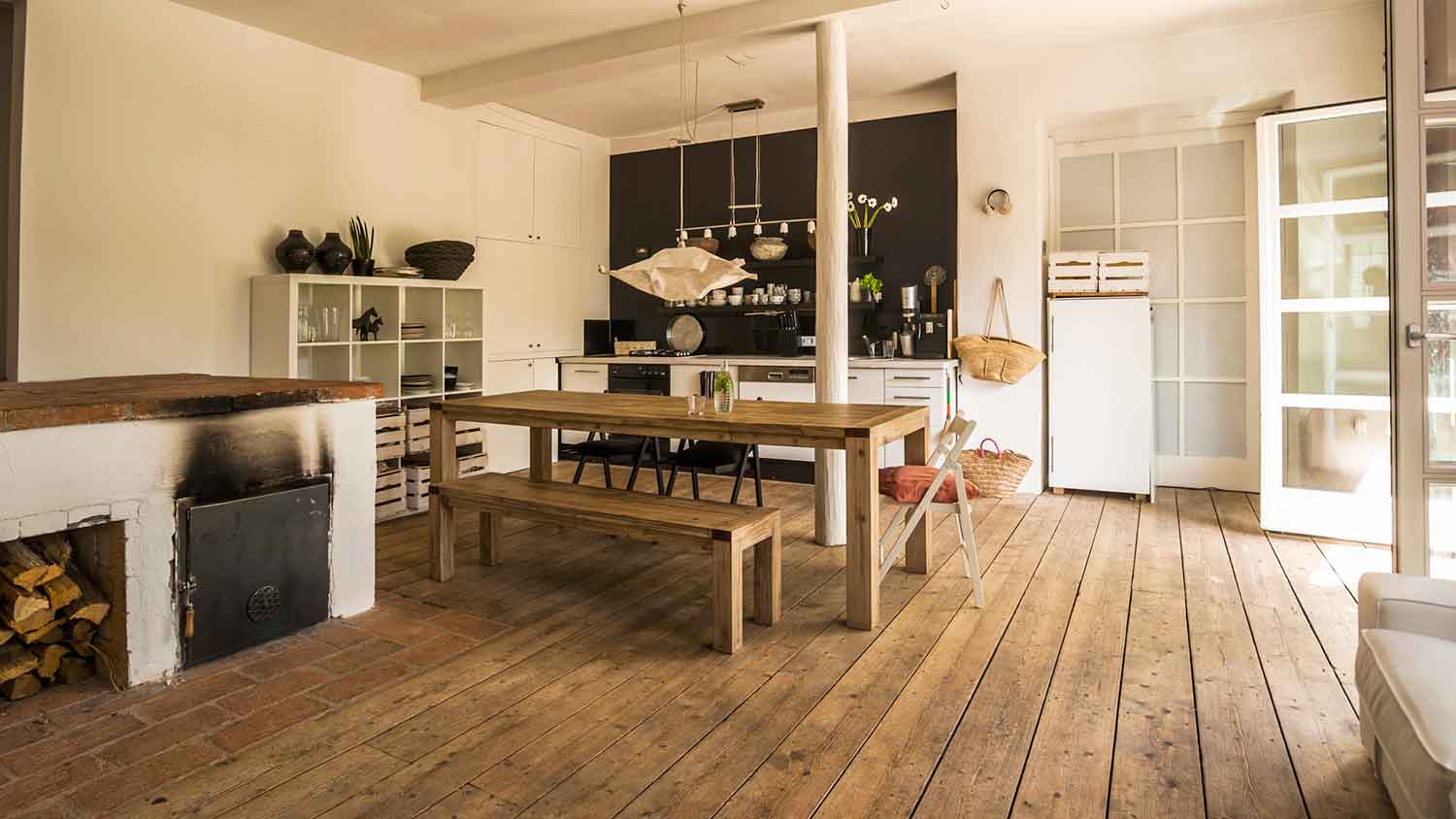
Sourced from old barns and other structures, eco-friendly reclaimed wood flooring adds character and charm to a space and is ideal for homes with a rustic or farmhouse style. However, the appearance of reclaimed wood floors may not suit every style of home, and they may require extra preparation before being installed. The material itself as well as installation with a local wood floor installer may be a bit on the higher side.
| Pros | Cons |
|---|---|
| Eco-friendly | Doesn’t suit all decor styles |
| Unique | Complex installation |
| Adds character | Higher cost |
Best for: Living rooms, dens, and farmhouse kitchens.
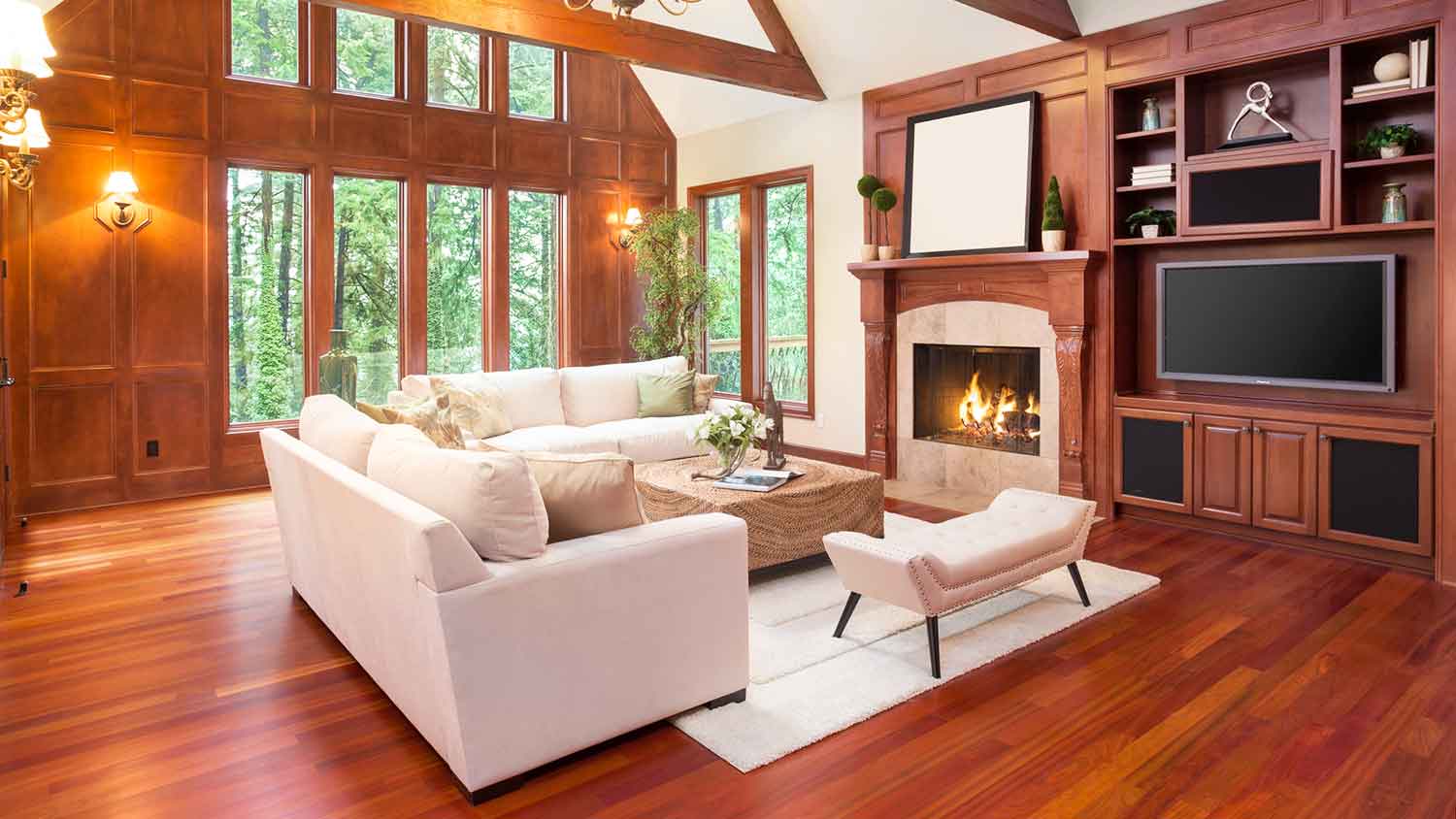
Tropical wood encompasses rare and unique species sourced from various regions around the world, such as Brazilian cherry, teak, mahogany, and tigerwood. These woods are highly prized in flooring due to their exceptional durability, rich colors, and striking grain patterns, adding a touch of luxury and sophistication to any space. However, tropical wood floors can be more challenging to maintain, and the cost of hardwood flooring made with tropical wood is often higher.
| Pros | Cons |
|---|---|
| Highly durable | High-maintenance |
| Rich, unique colors | High cost |
| Luxurious appearance | Limited availability |
Best for: Low traffic areas like bedrooms, dens, and home offices, where the beauty of the wood can be appreciated without excessive wear and tear.
Another factor to consider when you’re considering buying hardwood floors is whether to purchase pre-finished or unfinished wood flooring. The choice between these two options depends on your personal preference and your project’s requirements.
Unfinished wood allows for custom staining and finishing to match existing flooring, trim, and decor. However, pre-finished flooring offers faster installation and eliminates the need for on-site finishing, reducing fumes and mess in your home.
From average costs to expert advice, get all the answers you need to get your job done.

Here’s what you should expect to pay when renting an orbital, drum, vibrating, or edging floor sander—as well as where you can rent them and what else to know.

Both materials and labor determine hardwood floor installation costs. This guide breaks down all the prices you need to know before starting your new flooring project.

It’s impossible to keep floors damage-free over the years. Thankfully, the cost to refinish hardwood floors is far less than the price tag to replace them altogether.

Learn how to repair hardwood floors—no matter the type of damage. This guide will help you buff out scratches, fill cracks, and get rid of pesky water stains.
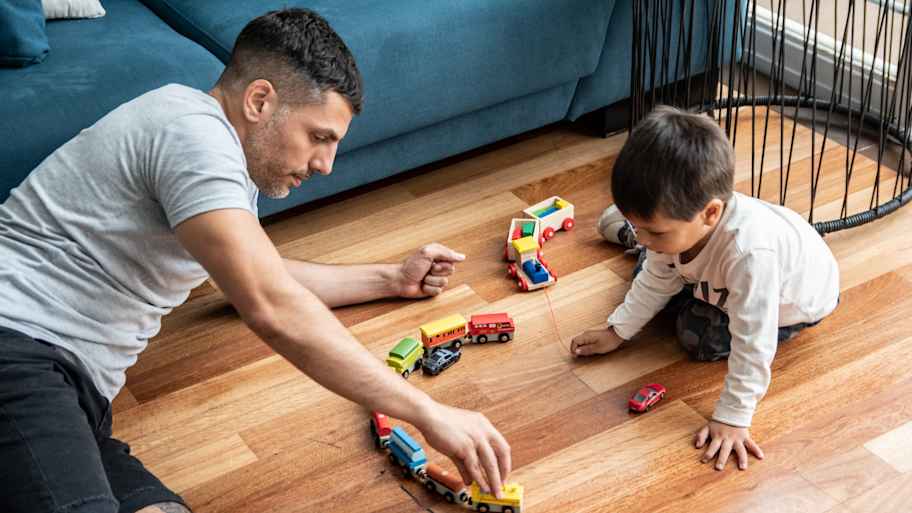
Get the look of hardwood at a fraction of the cost. This guide will help you understand the cost to install engineered hardwood floors in your home.
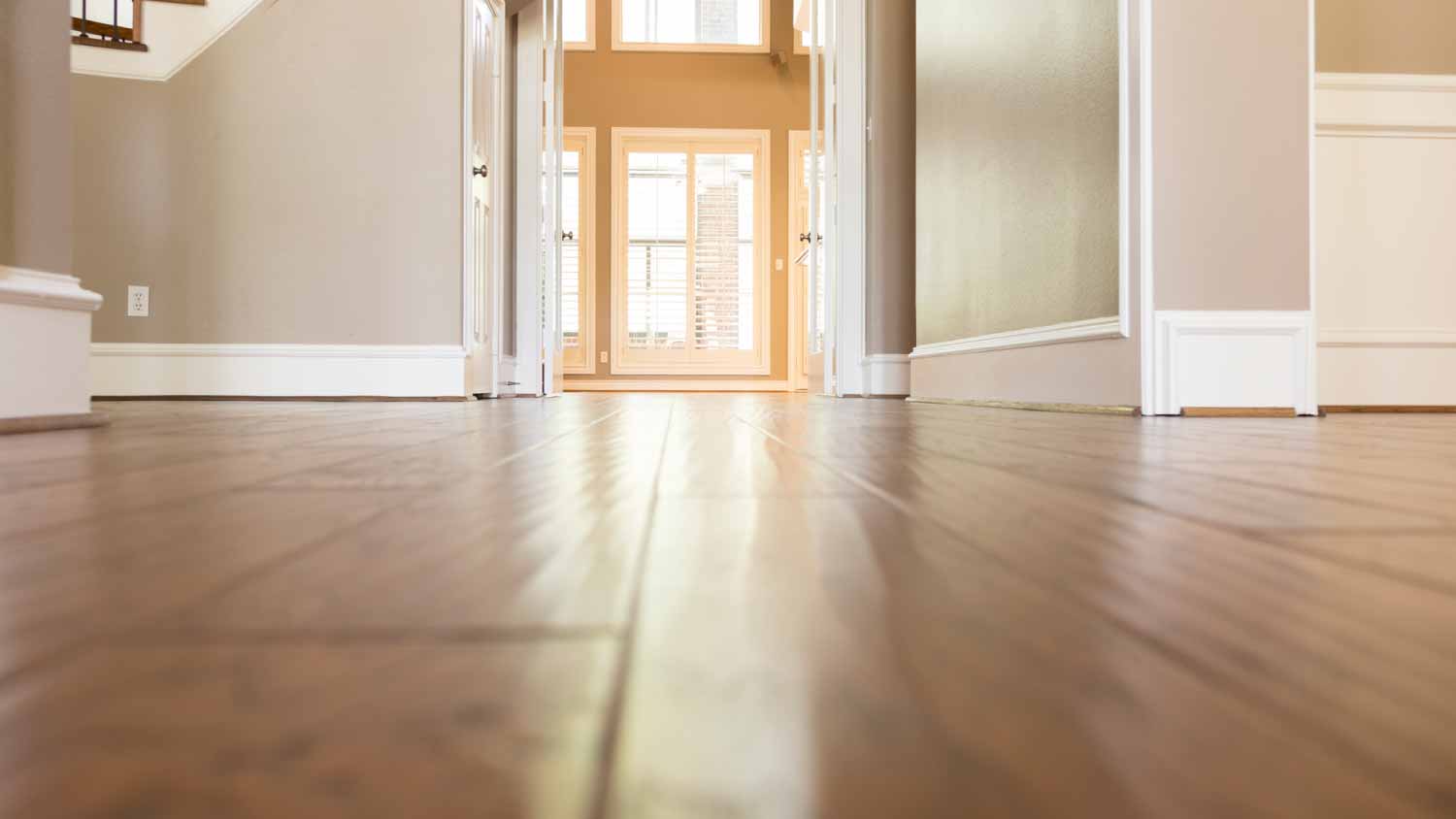
Before repairing or partially replacing flooring, make sure to discuss these hardwood floor repair questions with a pro.